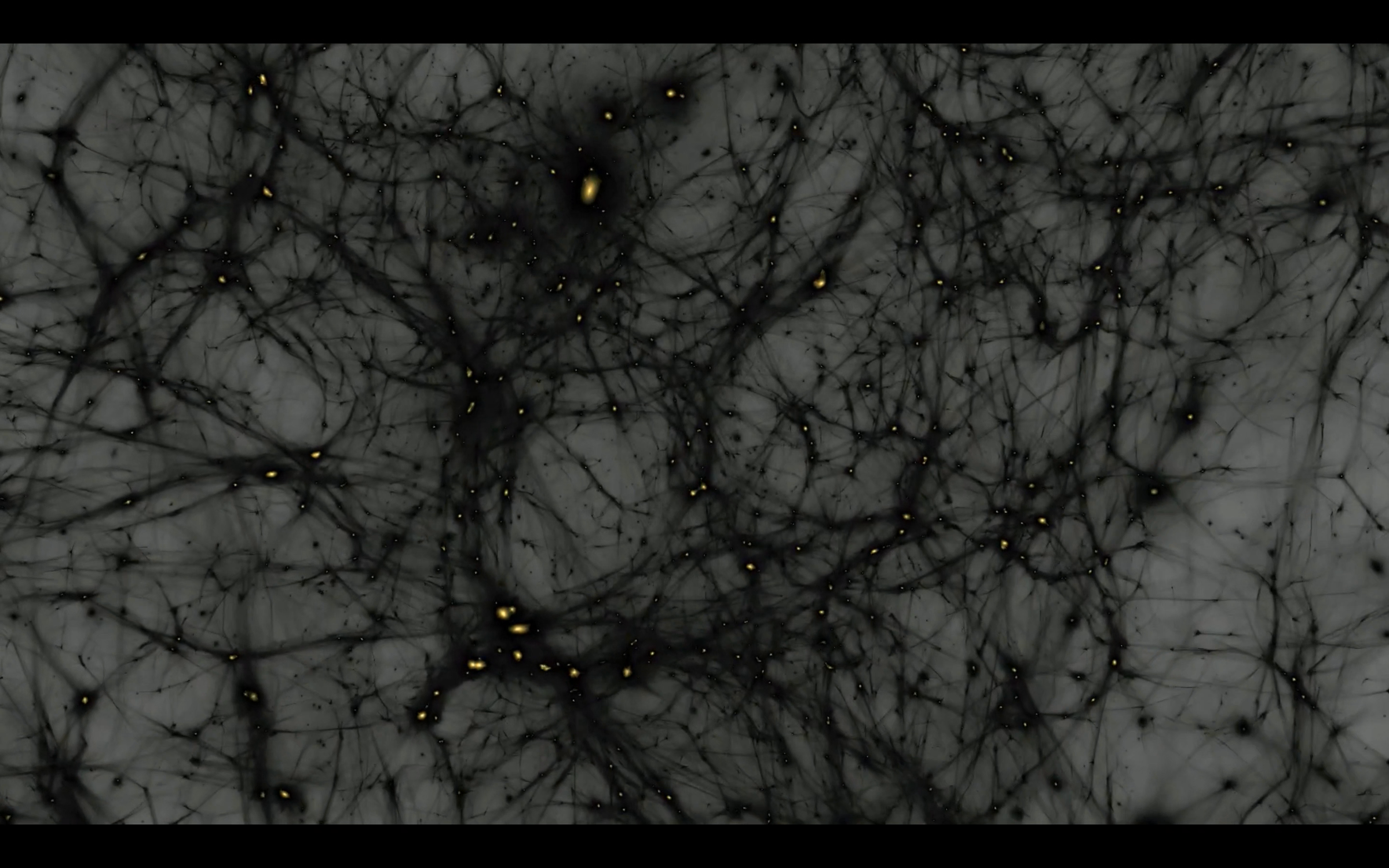
Extragalactic Astronomer
Final-year PhD candidate at Tufts University
Simulation by Y-Y. Mao, R. Wechsler, KIPAC/Stanford/SLAC; Visualization: R. Kaehler, KIPAC/SLAC
Picture credits (left to right): UKIDSS UDS; ESO (Giant elliptical galaxy NGC 1316 in Fornax Cluster.); Y-Y. Mao, R. Wechsler, KIPAC/Stanford/SLAC; Visualization: R. Kaehler, KIPAC/SLAC
The evolution of galaxies and the large-scale structure in the universe are intricately linked. As dark matter (DM) makes up ∼ 85% of the matter content in the universe, through gravity, it dictates the bulk of structure formation in the universe. Therefore, to understand the physical properties of galaxies in the present day, we need to understand how galaxies are linked to their host dark matter halos. How efficient are halos in converting available baryons into stellar content over their lifetimes? What is the role of the feedback, such as from active galactic nuclei (AGN) and supernovae, at different cosmic times in suppressing or halting star formation? Or as summarized by one of the four science questions of the 2020 Astronomy Decadal survey in the field of galaxy formation and evolution: “How do the [assembly] histories of galaxies and their DM halos shape their observable properties?” My research goal is to understand the evolution of galaxies and their host halos with cosmic time through deep multi-wavelength observations.




